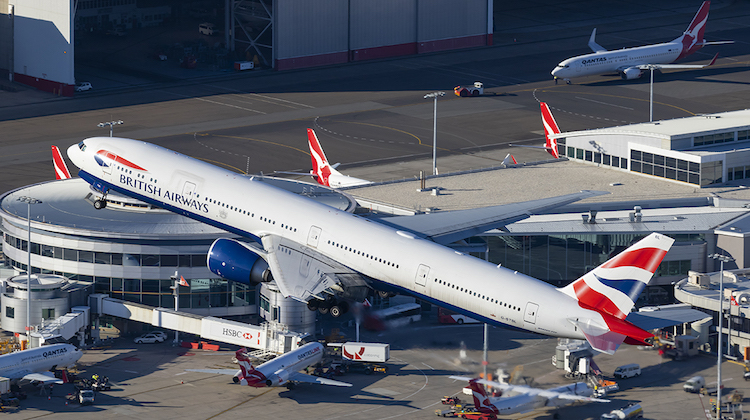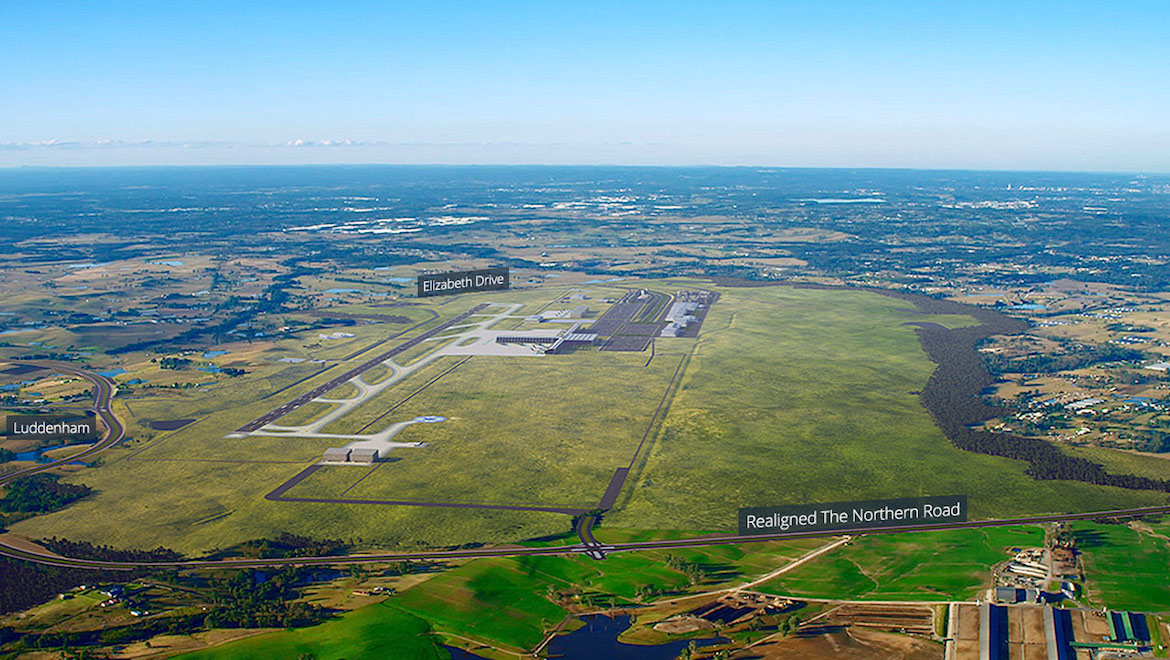
Recent aviation trends such as the move away from very large aircraft has reaffirmed the need for more aviation capacity into and out of Sydney, Department of Infrastructure, Transport, Cities and Regional Development deputy secretary Pip Spence says.
Construction on Sydney’s long-awaited second airport kicked off at Badgerys Creek in the city’s west in September 2018, with the project due to be completed in 2026.
The Western Sydney Airport Plan showed Stage 1 of Western Sydney International (Nancy-Bird Walton) Airport would feature a terminal capable of handling up to 10 million domestic and international passengers a year, with a single 3,700m long by 60m wide runway on a 05/23 orientation.
Looking further ahead, the design of the facility would allow for a second parallel runway and expansion of the terminals to cater for 37 million passengers a year by 2050 and 82 million a year by about 2063.

While a joint study on aviation capacity in the Sydney region conducted by the federal and NSW governments in 2012 noted the trend of airlines upgauging existing services, Spence says the experience in the years since has painted a rather different picture.
Spence says upgauging was seen globally at the time as an “elegant solution to congestion issues” that would improve the economics for airlines while relieving the pressure on the availability of airport slots.
And it was the A380 that represented the “embodiment to this approach”, with airports betting big on the world’s largest passenger aircraft with significant investment in Code F infrastructure to facilitate their arrival.
“But as we know now, things played out a little bit differently,” Spence told delegates at the CAPA – Centre for Aviation Australia Pacific Aviation and Corporate Travel Summit in Sydney on Thursday.
“In the battle between hub and spoke and the point-to-point services models, point-to-point has won in most circumstances.
“Passengers, in particular business travellers, have shown a clear preference for the direct point-to-point services and a greater number of frequencies on any given route.”

Spence pointed to Airbus’s recent decision to shut down production of the A380 by 2021, as well as soft demand for the passenger variant of the Boeing 747-8.
This was in contrast to total orders for the Airbus A350 and Boeing 787, which stood at 893 and 1,441 aircraft, respectively, at the end of June 2019.
Therefore, the hoped for alleviation of some of the congestion issues at Sydney’s Kingsford Smith Airport (KSA) from the use of larger aircraft has not eventuated to the degree it was expected to back when the joint study was written.
“In effect what we have seen is ‘samegauging’, a slight uptick in gauge but nowhere near the levels that industry predicted or hoped for 10 years ago,” Spence said.
“It’s now very clear that upgauging won’t provide the release of the pressure valve that many thought it might.
“The need for more aviation capacity is more stark now than back in 2014 and because of the constraints on KSA, the decision to meet that need through a second Sydney Airport makes even more sense.”

Spence said although there was still room at Sydney’s KSA for growth, the airport had a number of limitations.
This included its size, which at 900 hectares represented about a third of Brisbane and Melbourne airports and meant there was no room for another runway and physical constraints on taxiway, gate and apron developments.
There werew also the operating restrictions, such as the 2300 to 0600 curfew and the movement cap of no more than 20 takeoffs and landings in any 15-minute period.
Spence said there was currently no slot availability at KSA on weekdays between 0700 and 1000 and between 1700 and 1930.
“This severely limited the opportunities for airlines to establish commercially viable routes, both domestically and internationally,” Spence said.
“The capacity issues for Sydney Airport also create challenges for the efficiency of the whole east coast network.”

Further, Spencer noted the joint study estimated the economic cost to the Australian economy of not meeting Sydney’s future aviation demand would be a $34 billion hit to gross domestic product (GDP) by 2060, with New South Wales to suffer $17.5 billion in foregone gross state product.
Sydney Airport chief executive Geoff Culbert said at the CAPA conference on Wednesday changing the aircraft movement cap to a daily figure, rather than one calculated in 15-minute blocks, would help improve the operational efficiency of the airport and help it better recover from disruptions.
His call for change was also supported by Regional Express (Rex) deputy chairman John Sharp.
Spence said the cap and curfew was a “source of frustration for many”. However, there were no easy solutions.
“Striking a balance between productivity growth and the protection of community amenity is challenging,” Spence said.
“But I think it is also worth noting that the study did confirm that even if you did lost the cap, that doesn’t solve the problem.
“The physical constraints create their own overall limits for KSA. So you might buy a year or two but you would still have a problem in the long run.”
VIDEO: A promotional video from Western Sydney Airport’s YouTube channel.















